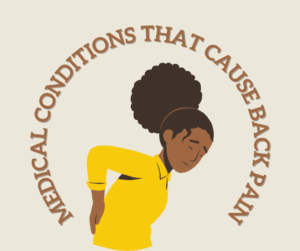Having back pain is never any fun. However, it is a typical sign of aging for most people, as 80% of people worldwide will experience it at some point in their lives. Lower back pain is even the leading cause of physical disability, and 31 million Americans alone suffer from it. If you are frequently experiencing pain in your back or spine, it may be time to seek assistance from a professional such as a chiropractor or your primary care doctor. It is also helpful to get familiar with the three different types of back pains to understand what you may be going through. It is generally a good rule of thumb to look at information such as this and ask your practitioner any questions or suspicions you may have about your back pain.
(Did you know? September is Pain Awareness Month)
The three classifications of back pains:
- Acute pain
Do you remember learning about acute angles in your middle school math class? They are the smallest measurable angels and measure less than 90 degrees. When we talk about acute back pain, we refer to issues that last anywhere from 1 day to 1 month. It typically occurs due to an injury in the workplace or doing household chores and is the body’s normal response to physical pain. The problem persists shorter than the other two types of back pain.
- Subacute pain
Subacute back pain persists from 1 to 3 months. If you are experiencing pain for close to 1 month, scheduling an appointment with a doctor is highly advised.
- Chronic pain
You probably hear about this kind of back pain the most, simply because it is the most severe type. It is one of the most common reasons people schedule appointments with their doctors. If the pain persists for this long, medical treatment must be sought out immediately if it already hasn’t. Unfortunately, the cause of back pain is not always diagnosable, though sometimes it can be a symptom of a more severe problem.
Possible causes of back pains:
- Arthritis or ankylosing spondylitis
- Bulging or ruptured disc
- Increased level of stress
- Inflammation of the muscle
- Injury from work or playing sports (which is notably the most common cause)
- Osteoporosis
- Pregnancy (half of all mothers will experience back pain within the 5th to 7th month of the gestational period)
- Pulled muscle
- Scoliosis
- Tumors that have spread to the back area
Here are the ways you can try to decrease your risk of back pain:
- Avoiding wearing high-heeled shoes
- Maintaining a healthy weight with a good diet and frequent exercise.
- Replace your old mattress. 63% of people have reported that getting a new bed helped them with their back pain problem.
- Stretching or taking breaks from the computer if you are an office worker.
- Stop smoking.
If you are still in doubt, never hesitate to contact your doctor. Most back pain issues are resolved in about six weeks when consulted by a professional. It is also crucial to get a checkup if you are at risk of any underlying conditions or diseases that may cause back pain.








